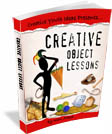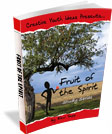Description
This is a great learning activity for youth to introduce the fruits of the Spirit and discuss the ongoing development of spiritual fruit in youth as they grow in Christ.
Materials
- A collection of fruits: Apples, Bananas, Custard Apples, Coconuts, Dragonfruit, Durians, Grapefruits, Grapes, Lemons, Limes, Oranges, Papayas, Pears, Pineapples, Pomelos, Rambutans, Soursop, Starfruit, Strawberries.
- You might also include toothpicks and a plastic knife so the youth can cut the fruits up and stick them together.
- A plate on which to build the tower.
- Optional: Plastic or rubber gloves
Preparation
Place the fruits and materials in a fruit basket or bowl where all the youth can see them. You should have one fruit basket for each group of youth.
Important Note: I prefer to do this activity with the youth designating a few tower builders who wear gloves so that at the end of the activity the youth can eat the fruits. You could also use the fruits for a fruit salad afterward. Just add the cream, nuts or other ingredients for your favorite fruit salad recipe and then you will have a tasty snack for the youth instead of wasting the fruit.
What to do
- Tell the youth or groups of youth to build towers from the fruit and other materials provided. You may choose to give all the groups of youth the same fruits and materials or give different groups different materials.
- Award prizes for the tallest, sturdiest, lightest, most creative, best architectural style, strangest, etc. For fun you may wish to video tape the construction of towers for a record of the event.
Application
While giving the following explanation, build your own tower from the fruits:
When we abide in Christ, God starts to produce the fruits of the spirit in our lives. (John 15) The fruits of the spirit are love, joy, peace, patience, kindness, goodness, gentleness, faithfulness, and self-control. (Galatians 5:22-23) And these fruits are produced in ever increasing measure. While 2 Peter 5-8, doesn’t specifically mention the phrase “fruits of the Spirit”, you’ll see some of the same qualities mentioned in the list it gives there: Faith, goodness, knowledge, self-control, perseverance, godliness, brotherly kindness, and love. It also says that if we have these in every increasing measure they will prevent us from being unfruitful. Actually, there is a logical pattern to the qualities mentioned there. We begin with a faith in Christ, which leads to a desire to do the good things that we know God’s wants us to do. But as we start to live that life, we realize there is so much more that we need to know to live a life that is pleasing to Him. And the more we learn about God and his plan for us, the more we discover even more areas of our lives that we need to change. And of course, change is never easy and it requires a lot of self-control. We will struggle and fail as we seek to make these changes in our lives. Only perseverance will carry us through. As we make these changes we will show more godliness in the way that we live our lives. But Godliness is ultimately expressed in the way we treat our brothers. Brotherly kindness will ultimately be expressed as love. In fact, we are told that others will truly know that we are Christians by our love – When the love of God is expressed through us to others. (John 13:35) The gifts build upon one another in ever increasing measure leading to a life defined by the greatest commandment: Love the Lord God with all your heart soul, mind and strength and love your neighbor as yourself. (Matthew 22:36-40)
(I wonder how many of us were tempted to destroy our competition instead of building our own tower? Satan is like that too. We work hard to try to be like Jesus. We do nice things like hold our tempers (place a piece of fruit onto your tower) or tell the truth (stack another piece of fruit on top) or obey our parents / teachers (place another piece of fruit on top), and when Satan sees us trying to grow more like Christ guess what Satan tries to do? (Satan tries to knock us down. ) Yes, Satan tries to knock us down. And sometimes he succeeds. But we have to pick ourselves up and try again. Sometimes it is our own weaknesses that cause us to fail – poor choices. We may be far from perfect, but if we keep making progress, ever increasing in our gifts, our lives will be fruitful.
 MORE IDEAS? See “Creative Object Lessons”
MORE IDEAS? See “Creative Object Lessons”
200 page e-book that explains everything you need to know when planning your very own object lessons. It contains 90 fully developed object lesson ideas and another 200 object lesson starter ideas based on Biblical idioms and Names / Descriptions of God.




